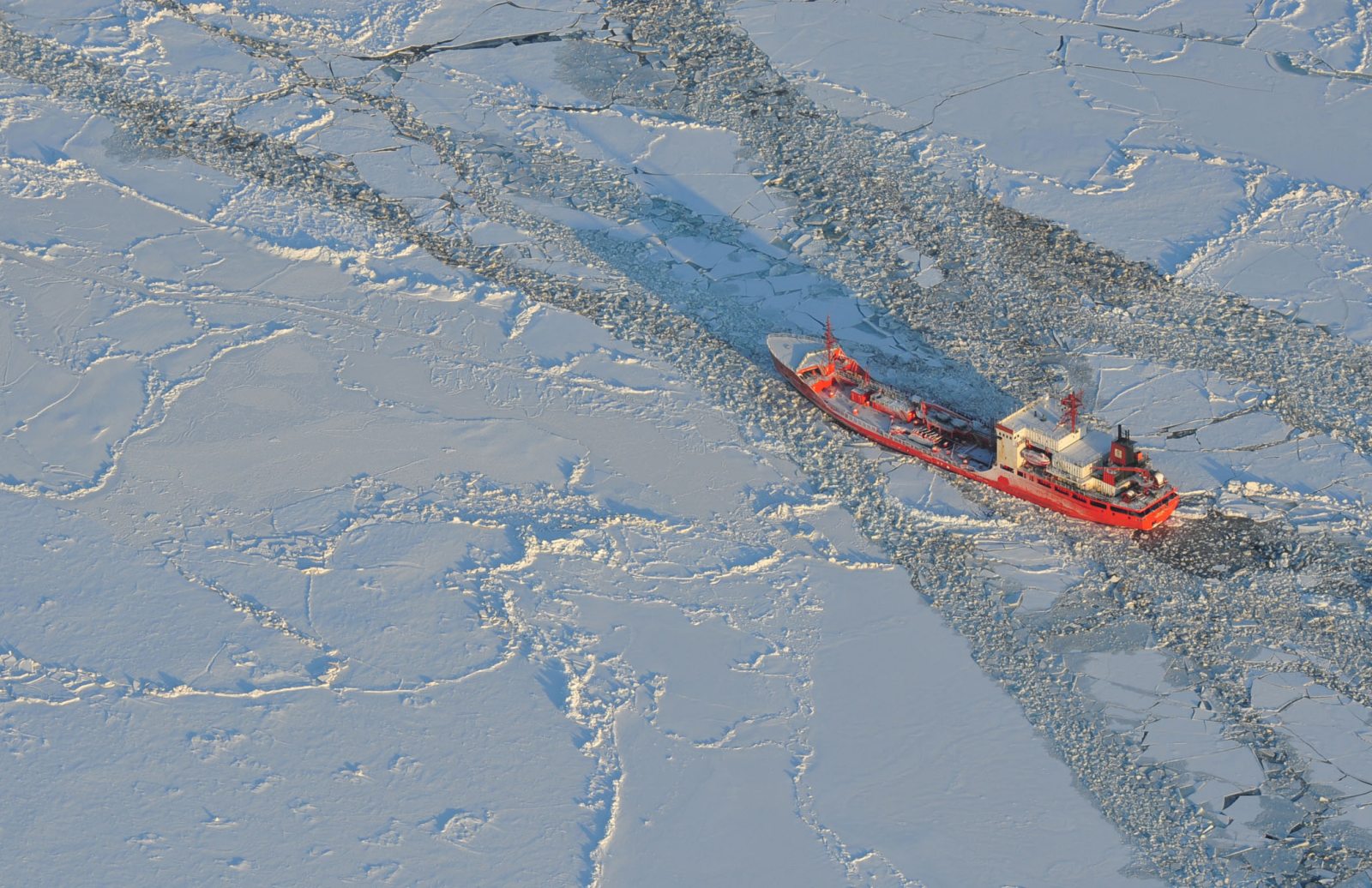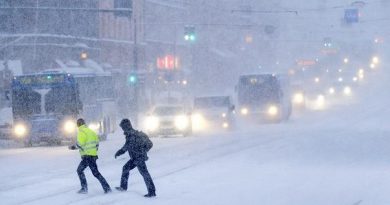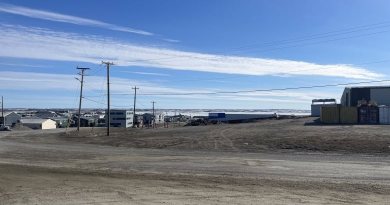Arctic sea ice hits max for winter, record floes off Alaska
 After growing to one of the biggest polar packs seen during the past decade, sea ice covering the Arctic Ocean has officially maxed out for the winter and begun its slow, seasonal melt into another summer of retreat.
After growing to one of the biggest polar packs seen during the past decade, sea ice covering the Arctic Ocean has officially maxed out for the winter and begun its slow, seasonal melt into another summer of retreat.
“Arctic sea ice reached its annual maximum extent on March 18, after reaching an initial peak early in the month and declining briefly,” according to the newest analysis posted by the National Snow & Ice Data Center (NSIDC). “Ice extent for the month as a whole was higher than in recent years, but still below average.”
Driven by record-breaking floes in Alaska’s Bering Sea, and above average ice cover in Baffin Bay between Greenland and Canada, the ice cap averaged about 5.87 million square miles last month — the greatest March ice cover seen since 2008. The total was tempered by below-average ice cover in the Barents and Kara seas north of Europe and Russia (though the Kara rebounded somewhat in March), where temperatures remained 7 to 11 degrees F above normal.
Only eight seasons have produced smaller March ice footprints in the Arctic during the 34 years of satellite coverage. Here’s a chart making comparisons to several of those years, and another image showing the current status updated every day.
Role of ice cap
Why is this important? The ice cap plays an essential role in stabilizing the world’s climate, but has been shrinking to record and near-record levels during recent summers. This loss speeds up global warming and thinning of existing ice because darker open water absorbs more solar energy than reflective white floes. Lose the ice in summer, and you destroy essential habitat for healthy populations of polar bears, walruses and seals. Later ice return in fall exposes Alaskan villages to catastrophic storms and erosion.
Let’s put the latest data into perspective. The average cover for this March spanned an immense area — enough to quick-freeze every U.S. state plus Mexico. Yet that total, as grand as it seems, was about 205,000 square miles below the average observed for March between 1979 and 2000. At the same time, it covered about 301,000 square miles more ocean than the record low seen in March 2006. Texas covers about 260,000 square miles.
It will come as no surprise to frost-nipped, winter-weary Alaskans that the 2012’s striking polar ice growth was largely home grown.
“For most of the winter of 2011–2012, the Bering Sea has been choking with sea ice,” explained this March 20 story, accompanied by startling satellite images, by NASA’s Earth Observatory.
Blame the chilling alchemy of low temperatures and south-trending winds over the Bering Sea, where persistent low pressure drew down Arctic air about 11 to 14 degrees Fahrenheit below average for the time of year, the NSIDC reported. Baffin Bay and parts of the Sea of Okhotsk experienced the similar trends.
NASA’s Earth Observatory offers more detail:
“The accumulation of ice this season has largely been fueled by persistent northerly winds blowing from the Arctic Ocean across the Bering Strait. The local winter weather has been dominated by low-pressure systems — with their counterclockwise circulation — that have brought extensive moisture up from the south to coastal and interior Alaska, while sending cold winds down across the sea to the west.
“Those winds pushed Arctic sea ice toward the narrow, shallow strait, where it piled up and formed an ice arch that blocked the flow. As arches fail because of wind stress, large floes of sea ice can move south into the Bering Sea. Ice also has piled up on the north side of St. Lawrence Island, near the mouth of the strait.”
Here’s another wrinkle. Ice has almost always shrunk during March, but the last three years have seen ice growth that month. Although the date of the winter maximum has occurred from mid-February to late March during the past three decades, scientists have seen a trend toward a later ice climax in recent years.
This year, the NSIDC said, the ice maxed out 12 days later than average.
Looking ahead
One explanation is a bit counter-intuitive and may bode ill for the fate of summer ice.
“It is not clear why the maximum ice extent would happen later, given that in general, ice extent is decreasing,” the NSIDC wrote. “One possibility is that the lower winter ice extents might make it easier for ice to continue growing later in the season. With lower winter extents, a late cold snap or northerly wind could spread ice southward over ocean that would normally be ice-covered at that point.”
During recent decades, there has rarely been less total ice in the Far North. The volume of ice — the surface footprint of the floes plus all the ice hidden beneath the surface — remains at some of the lowest levels documented since 1979. As of Feb. 29, the estimated mass of Arctic ice appeared to be even lower than minimum volumes estimated for all but a handful of the previous 34 summers, according to the latest calculations posted by the Polar Sceince Center at the University of Washington.
“Researchers do not expect the late maximum ice extent to strongly influence summer melt,” the NSIDC said in its update. “The ice that grew late this winter is quite thin, and will melt rapidly as the sun rises higher in the sky and the air and water get warmer.”
Contact Doug O’Harra at doug(at)alaskadispatch.com
For more stories from Alaska Dispatch, click here.



